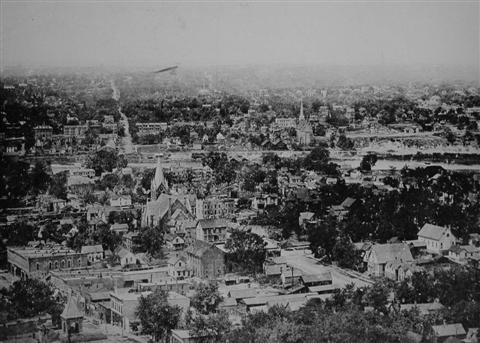
East Village History
From Then Till Now: East Village
Located on the east side of the Des Moines River in downtown Des Moines, the East Village begins at the Des Moines River and extends east to the Iowa Capitol Complex (East 14th Street). The northern edge of the neighborhood is Interstate I-235, and the southern border is the Des Moines River. As one of the original commerce areas of Des Moines, East Village encompasses some of Iowa’s most significant buildings, including the State Capitol and numerous buildings on the National Register of Historic Places.
In 2000, the City of Des Moines slated several buildings in the neighborhood for demolition. However, a dedicated group of individuals came together to advocate saving the buildings. Many of them stand today and are home to popular eateries, boutiques and loft-style housing.
The East Village is a work in progress but one thing is for sure: The neighborhood offers a bit of culture, character and eclectic charm that comes from a history that extends well over 150 years!
Enjoy the following images of the East Village (courtesy of the State Historical Society of Iowa)!

Looking northwest from State Capitol, 1888
Photo depicts current East Village area. Des Moines River can be seen in the background. Churches include: Lutheran Church (1885), St. Mary’s Catholic Church (2nd & Crocker), & Swedish Lutheran Church (E. 5th/Des Moines St.). In the lower left hand corner, the bell tower from Bryant School can be seen. Today, a stone on the State Capitol grounds marks where the school once stood.

East 5th/East Locust looking east toward State Capitol, 1885
Note the dirt streets and horse on left with blindfold. Right foreground is Capitol City Bank. The rest of the buildings in this area were built in the 1870s and 1880s when Des Moines’ east side was experiencing a commercial boom.

Des Moines, East side of East 5th Street, Sept. 29, 1908
Photo shows tavern, restaurant, drug store and hardware store. Note beer keg and bicycle on sidewalk.


NE Corner of East 6th/East Grand, 1953
Behind bus is Hammer Drug and Hast’s Meat Market. Note “Eat Colonial” bread advertisement on front of bus.

West side of East 6th, Feb. 16, 1953
Introduction of Locust Street as a one-way street. Photo taken facing north from in front of current Noodle Zoo restaurant. Shown at left would be Scandia Bank building parking lot. Further to the north is the current Gong Fu Tea building.
